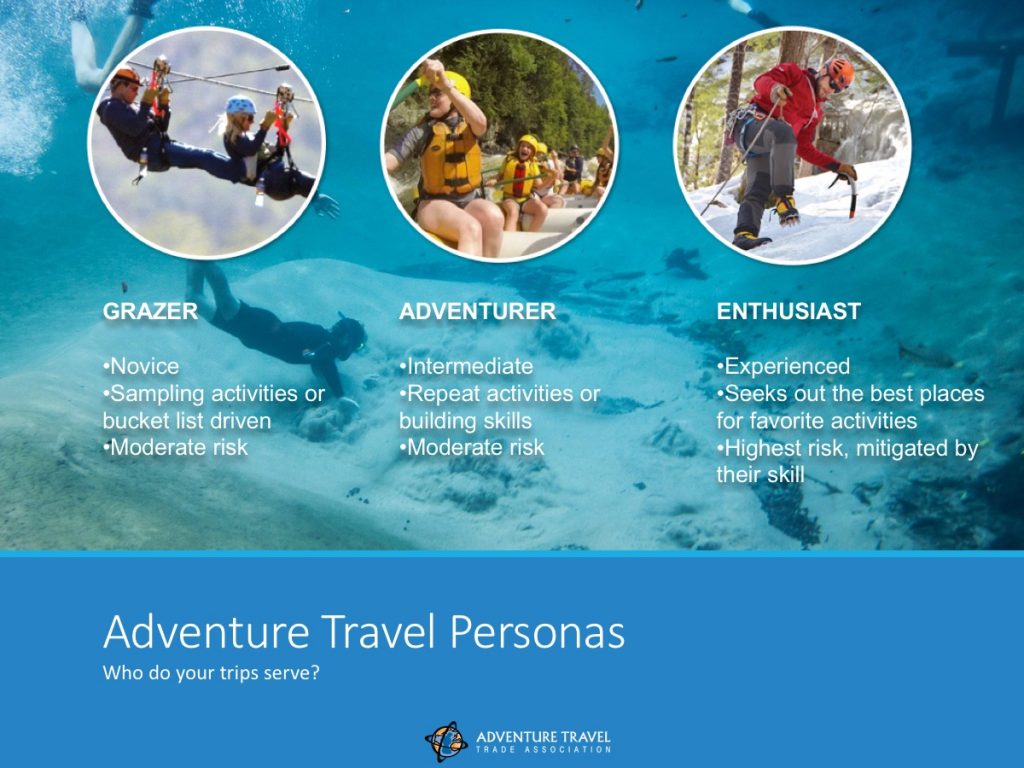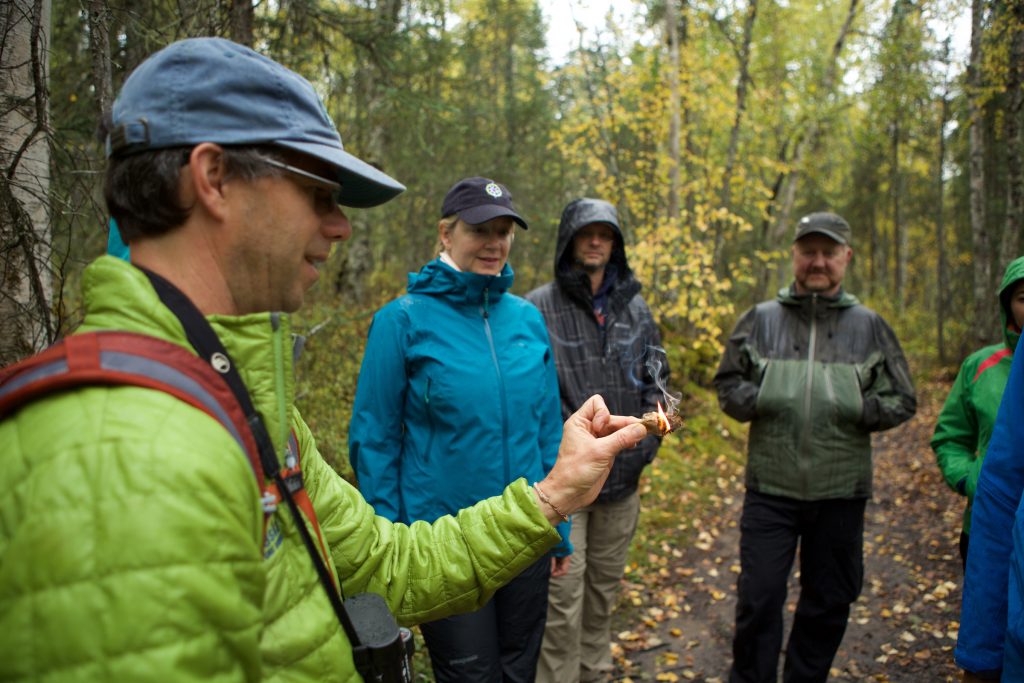By Christina Beckmann with Toni Neubauer, Gordon Janow, and Russell Walters
As any experienced adventure travel tour operator can attest, coming up with a fantastic trip concept - challenging as that is - is often the easy part of designing adventure itineraries. Much more challenging can be setting the right price and delivering that itinerary at a profit.
This article provides:
- A step-by-step process for thinking through the specific challenges of adventure trip pricing;
- Suggestions for how to present your prices to travelers, taking advantage of consumer research showing the benefits of price anchoring and other tricks; and
- Recommendations for linking prices to specific adventure traveler personas.

Calculating Your Base Price Step-by-Step
Interviews with representatives from established adventure companies including Northern Outdoors, Myths & Mountains, Alpine Ascents, and Expediciones Huaxteca suggest the following approach to price setting.
Step 1: Know Yourself
Begin first, the experts unanimously agree, with revisiting (or establishing) your vision for your company. What kind of business are you operating? What is your mission? What is your brand and quality promise? What type of clients are you aiming for?
Where does your expertise lie?
Here’s a sample profile:
Kind of Business: Soft adventure, appealing to adventure novices and families
Mission: Educate, inspire and awaken people to the beauty of nature and new cultures
Brand and Quality Promise: Safe, Reliable, Fun, Enriching Adventures for families
Desired Clients: High-end/ luxury, multi-generational, “luxury” in the sense of access to remarkable experiences
Look in particular at your quality promise. Would you characterize yourself as:
- Highest quality, no expense spared
- Value for money: good quality and prices are moderate
- Budget: no frills, appealing to a wide market
- Customer Audience: targeting intellectuals looking to engage deeply and have a learning experience, or possibly targeting more active, adventuresome trips with less cultural emphasis
Then, research how you compare to similar companies. For example in the multi-generational/family category in this sample there are a number of adventure companies offering itineraries, a sample of the more well-known that a potential traveler might have on their list include:
- Natural Habitat
- G Adventures
- Adventures by Disney
- Backroads
- Tauck
Step 2: Itemize Fixed and Variable Costs
Next itemize the various components of your price. This aspect also takes into account where your trips are occurring and in different countries you may have different views of the cost structure.
You will need to itemize:
- Fixed costs (salaries, equipment)
- Variable costs (such as marketing)
- Salaries of employees
- Rent
- Heating and electric
- Credit card charges
- Legal expenses
- Mailing
- Printing
- Marketing
With respect to variable costs, here is an example of some of the detailed categories you might have for an adventure trip involving trekking and camping with the use of local porters and guides. (The ordering of the categories is not significant.)
- Agent commission
- Fee to ground operator (if applicable) which likely varies per itinerary
- Payroll - Guide (contract or employee)
- Payroll - Taxes
- Travel
- Insurance
- Gear and Supplies (supplied by company versus provided by individuals taking the trip)
- Promotional items such as ball caps or t-shirts for guests
- Guide cell phone - possibly a satellite phone, include the expense of the service plan; decide whether you will be cybercasting from the road
- Lodging and Camping fees
- Guide laundry
- First Aid Kits
- Meals (per person, per day)
- Permits and Licenses
- Transportation in-country per guest
- Airport to hotel roundtrip
- Hotel to trailhead roundtrip
- Hotel per day
- Local Charity Donation
- Budgeted Profit Margin
Step 3: Calculate Breakeven
Now that you have the full cost of your trip in hand, consider your breakeven point. Run a few realistic average cost scenarios. Determine how many trips you will need to sell at your target gross margin and net profit margin to make the budget and cover the fixed costs.
Define exactly how many passengers are needed in order to break even on the departure. How many do you need to generate a profit?
Profit margins for adventure companies span the range from 10 - 30% and you might want to set a couple different target profit margins for your trip. As noted in the section on fixed costs, remember to apply a portion of the fixed costs to each trip.
If you decide to sell at a lower price with a lower gross margin, you will need to sell more trips than if you had a higher margin. Consider your vision of what kind of company you want to be, and your target market - i.e. trips for which you need to reach a wide audience in order to achieve a higher volume will probably require lower levels of customization, may be shorter in duration, may operate in less remote environments. If your vision is for highly customized, remote and unusual trips, be prepared for a narrower audience and lower volume. In this case, higher margin, and ultimately a higher price, will most likely be required.

Step 4: Consider Retail and Wholesale
Consider retail and wholesale pricing. When you use an agent, there will be a markup to the traveler, so you will most likely have a lower price for wholesalers than you do for your own retail.
Step 5: Compare with Competitors
Look now at the price you need to charge for this trip in comparison with what your competitors are charging for similar trips. And then consider the target market you identified at the beginning of the exercise. Is the price consistent with the target market?
Step 6: Monitor
This step happens once you are selling trips and doing business. It is very important to continually monitor cash and accrual financials carefully.
You will report revenues on your income statement as they are earned, which may be before the cash is actually received from your customers. Similarly, you will report expenses in the period in which they occur, or when they expire, and this may be in a period different from when the payment is made.
It is highly recommended that adventure travel companies monitor accruals, which will provide a better picture of your company's profits during a specific accounting period. This is because the income statement prepared under the accrual basis will report all of the revenues actually earned during the period and all of the expenses incurred in order to earn those revenues.
In the course of your trips, keep track of the budget with the actual financials to confirm you have been realistic in your planning. This means, as the trip is proceeding, capture and record differences in your budgeted expenses with the actual expenses. For example, maybe you budgeted $75 per day for ground transportation, but there was a change in your local partner and your budget per day for ground transportation went up to $85. Be sure to capture all expenses like this. You may need to make corrections in the course of the trip to stay on budget. Or consider how other trips are selling to determine if going over budget on one, might be offset by gains in others.
Monitor which of your trips are selling, and when. Every few months look back and assess what price points are doing the best with your target market. Consider whether this is in line with your vision for your company and product, and what types of adjustments you might want to make. You may want to retire your underperforming itineraries and place more emphasis on your trips that sell well, for example.
Pricing Article Two next week focuses on "Virtues of Applying a Value Based Pricing Philosophy."

